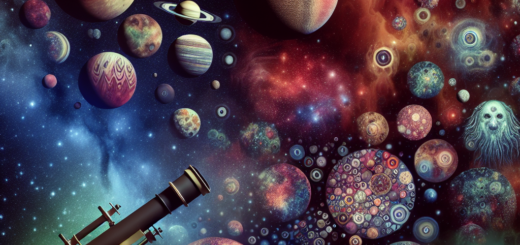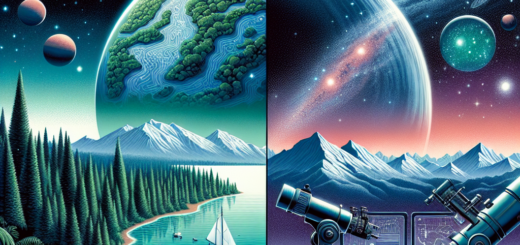Unveiling the Mysteries of the Habitable Zone: Could it Hold the Key to Extraterrestrial Life?
The search for extraterrestrial life has captivated scientists and space enthusiasts for decades, with countless theories and speculations about where and how we might find beings from beyond our solar system. One key concept in this search is the idea of the habitable zone, a region around a star where conditions are just right for liquid water to exist on a planet’s surface – a crucial ingredient for life as we know it.
But what exactly is the habitable zone, and how does it play into the search for extraterrestrial life? Let’s delve into the mysteries of this concept and explore its potential implications for the search for alien life.
The habitable zone, also known as the Goldilocks zone, is the region around a star where temperatures are just right for liquid water to exist on a planet’s surface. This is considered a key ingredient for life, as all forms of life on Earth require water to survive. In our own solar system, Earth lies comfortably within the habitable zone of the Sun, allowing for the existence of liquid water and a diverse array of life forms.
But the habitable zone is not a static concept – it can vary depending on the type and age of the star in question. For instance, stars that are smaller and cooler than our Sun (such as red dwarfs) have habitable zones closer to the star, while larger and hotter stars have habitable zones farther out. This means that the habitable zone for a given star can shift over time as the star ages and evolves.
One of the key questions in the search for extraterrestrial life is whether planets within the habitable zone of other stars could harbor life. Scientists have identified a number of exoplanets (planets outside our solar system) that lie within the habitable zones of their respective stars, sparking excitement and speculation about the possibility of finding alien life.
However, being within the habitable zone is not a guarantee of life – other factors such as the planet’s atmosphere, composition, and geology also play crucial roles in determining whether a planet can support life. For example, a planet with a thick atmosphere of greenhouse gases may experience a runaway greenhouse effect, making it too hot for liquid water to exist despite being within the habitable zone.
Despite these uncertainties, the habitable zone remains a key concept in the search for extraterrestrial life, guiding astronomers in their quest to identify potentially habitable exoplanets. The discovery of such planets could provide valuable insights into the prevalence and diversity of life in the universe, shedding light on our place in the cosmos.
In conclusion, the habitable zone is a fascinating concept that holds great potential for uncovering the mysteries of extraterrestrial life. While many questions remain unanswered, scientists continue to push the boundaries of our understanding, searching for clues that could unlock the secrets of life beyond Earth. Who knows what discoveries lie ahead – perhaps the key to unlocking the mysteries of the universe lies within the habitable zone.













